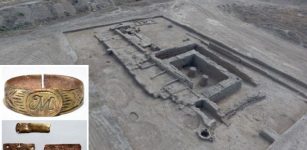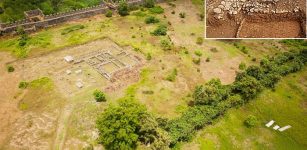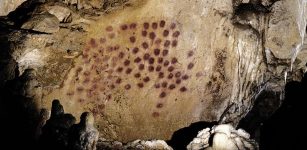Mystery Of 3,000-Year-Old African Civilization Garamantes And Its Ancient Secrets
AncientPages.com - A team of researchers led by Professor David Mattingly, of the University of Leicester's School of Archaeology and Ancient History, is investigating a lost civilization in southern Libya that will help to reshape the history of early Africa.
The subject of the research is an ancient Saharan people called the Garamantes, whose settlements can be as old as 3,000 years.
A long-forgotten Saharan people made the desert bloom, built impressive cities, and controlled an empire of 70,000 square miles.
Nearly all scholars had thought this ancient people, known as the Garamantes, had been little more than desert barbarians living in one small town, a couple of villages, and scattered nomadic encampments.
The Garamantes had at least three big cities and 20other important settlements in the middle of the world's largest desert and the desert, where rainfall averages only half an inch each year, was successfully cultivated.
A 3,000-mile network of underground irrigation canals was built by the Garamantes, which tapped into natural fossil water supplies laid down more than 40,000 years ago when rain last fell plentifully in the area.
Thanks to aerial photography and satellite images, Professor Mattingly and his team were able to discover hundreds of fortified oasis settlements and advanced water and irrigation systems that sustained advanced oasis agriculture.

These discoveries reveal that the sun-beaten and arid lands of the Sahara have been a much more populous place than first thought.
"The Sahara is often depicted as a totally hostile landscape in which only a few scattered nomads could eke out an existence prior to the expansion of Trans-Saharan trade routes in the Islamic era,' Professor Mattingly said.
"The new evidence suggests that the early medieval expansion of trade and settlement built on earlier initiatives, in which the Garamantes had played a significant role.”
Image source
The five-year project looks at the period dating from 500BC to AD 1500. The team started with a focus on southern Libya where the heartlands of the Garamantes were located – once thought to be a nomadic tribe living in scattered camps dotted among the dunes of the central Sahara, the Garamantes are now known to have built sophisticated permanent villages and urban settlements.
They also practiced oasis agriculture – exploiting fossil water sources to irrigate crops – and were skilled craftsmen and manufacturers which has been shown by examples of metalworking and textile production found at the archaeological sites, and they were occupied with trade.
But this is not all. As Professor Mattingly’s Research Associate, Dr. Martin Sterry, explains, the implications of the discoveries relating to the Garamantes extend into other areas of the Sahara.
“Our mapping work from satellite images has revealed similar patterns of permanent settlements and oasis farming innovation in other regions and it looks like some of this also originated in the pre-Islamic era,' he added.
"This changes the whole basis of our understanding of human occupation with and contacts across the Sahara. The desert was a much more intensely settled and inter-connected region than we have previously realized,' Professor Mattingly said.
The £1.8 million project, funded by the European Research Council (ERC), began in 2011 and contributed with vast knowledge about pre-Islamic and early Islamic Africa, including demonstrating the formation of early states, tracing population migrations, and finding some of the earliest evidence of Saharan trade.
AncientPages.com






















